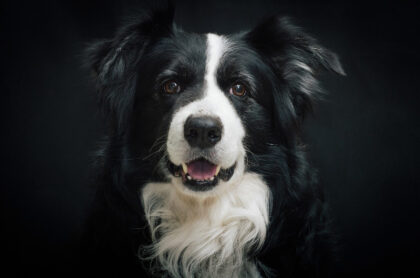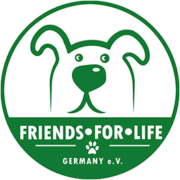 It is said that the dog is man’s best friend. And best friends understand each other blindly – of course. However, things are a little different for humans and dogs because they both speak completely different languages. Dog owners usually know how to interpret their four-legged friend’s signals quite well. Nevertheless, it is sometimes shocking how little some supposed dog experts know about the four-legged friends with the cold nose. We clear up the 7 biggest misconceptions about dogs!
It is said that the dog is man’s best friend. And best friends understand each other blindly – of course. However, things are a little different for humans and dogs because they both speak completely different languages. Dog owners usually know how to interpret their four-legged friend’s signals quite well. Nevertheless, it is sometimes shocking how little some supposed dog experts know about the four-legged friends with the cold nose. We clear up the 7 biggest misconceptions about dogs!
1.) Dogs that bark don’t bite
Big mouth, nothing behind it? With nieces! The claim that barking dogs are harmless, although widespread, is largely made out of thin air. After all, barking is often the last warning that a dog gives before an attack – or the attack signal with which a pack of dogs communicates with each other. Barking can certainly express joy, but this can rarely be clearly determined, especially with a strange dog.
If you know your dog well, you can of course tell from the tone of voice, posture and much more whether your four-legged friend is barking out of joy or aggression – but if it’s a strange dog, you shouldn’t rely on such diagnoses. The following applies here: If the dog barks, keep your distance until he calms down.
2.) Growling dogs are aggressive
“Be careful, he growls, he wants to bite!” – Well, admittedly: That’s not entirely unlikely. In any case, growling in dogs is clearly a defensive sign. However, aggression does not necessarily have to be associated with it. Insecure dogs in particular often growl to express their discomfort with a seemingly threatening situation.
Growling means: Go away, leave me alone. If the dog continues to be harassed, it can happen that he no longer knows how to help himself and snaps. Basically, the growl initially has an exclusively defensive character and nothing aggressive in itself. If the other person reacts adequately to the signal, a growl usually does not result in any further aggression.
3.) Fighting dogs are dangerous
Reports of dangerous fighting dogs keep coming through the press. In many federal states, muzzles and leashes have long been mandatory for breeds classified as fighting dogs, the dog tax is set significantly higher and temperament tests for the animals as well as suitability tests for the owners are always hotly debated.
In fact, opinions vary within Germany as to which dog breeds are fighting dogs and which are not. While there is widespread agreement about some breeds, such as the Pit Bull or the Staffordshire Terrier, in some federal states breeds such as the Doberman are also considered dangerous, which are not mentioned at all in other federal states.
Regardless of which dog breeds are classified as fighting dogs and which are not, one thing can be said clearly: fighting dogs do not bite more often than “normal” dog breeds. On the contrary: in the current biting statistics, German Shepherds are at the top, closely followed by oh-so-cute Jack Russel Terriers – fighting dogs only appear at the bottom of these statistics. One reason here is, of course, that fighting dogs are less common – another is that (if kept properly) they are by no means more aggressive than other dogs.
There are only two serious risks that fighting dogs actually pose. One is that their biting muscles are significantly stronger through breeding and therefore when they bite they cause significantly more damage than, for example, a Chihuahua. The other thing is that irresponsible people use their physical characteristics to specifically arouse them and, with their growling attack dog on a leash, boost their own ego by spreading fear and terror.
4.) If a dog wags its tail, it is harmless
“Look, he’s wagging his tail! He’s friendly!”, you often hear. In fact, dogs wag their tails in joyful excitement. However, this should not be interpreted as a sign of harmlessness, because wagging tails are also used on other occasions.
For example, dogs also wag their tails to distribute scents from the anal gland or to demonstrate inferiority. A wagging tail can mean joy, tension, insecurity or even showmanship. Fix yourself on thisNever focus on wagging alone, but rather try to observe your dog’s entire posture and facial expressions – this will give you a more realistic assessment of his emotional state!
5.) Mixed breeds are healthier than pedigree dogs
When people think of pedigree dogs, many people immediately think of torture and unhealthy breeding criteria. Mixed-breed dogs, as the saying goes, are generally much healthier. However, it’s not quite that simple.
Of course, there are breeds in which questionable breeding criteria have led to health risk factors – just think of the pug, which can hardly breathe through its short nose as it gasps and puffs, or the bulldog, whose puppies were given a caesarean section because of their thick heads must be brought to the world. However, the German animal protection law is not consistent with these breeding criteria – recognized breeding associations have long since placed emphasis on the fact that their members breed dogs according to breeding criteria that are harmless to health. Many breeds are bred back to their less extreme original forms: the pug, for example, gets a small nose back. In order for this to be possible without losing the typical breed character, careful selection of breeding animals is necessary.
Ultimately, the animals from a recognized breeder must undergo many health checks before they are approved for breeding. This guarantees that they give birth to healthy young animals. However, the costs for the breeding operation also increase, which in turn are reflected in the prices for the puppies. A puppy from a responsible breeder will never be cheap.
However, if you want a purebred dog for the discounter price, you will resort to cheap animals without a thorough test for breeding suitability – and in many cases you will end up with an animal that has a health problem. In Eastern Europe in particular, there is a booming pedigree dog market in which a wide variety of dog breeds are bred under miserable conditions in order to achieve maximum profit from cute (but unfortunately often sick) dogs.
What is important for a dog’s health is not whether it is a mixed breed or a specific breed, but rather whether it comes from responsible breeding or an often torturous breeding process.
6.) If a dog goes into the apartment, you have to push him in with your nose
Especially in puppyhood, when a dog is not yet house trained, but sometimes even later, it occasionally happens that you as the owner are “surprised” with puddles and piles in the apartment – you understand that this is not a pleasant surprise itself. Therefore, there is of course agreement that this behavior cannot be tolerated and must be stopped as quickly as possible.
One of the most popular ways to stop a dog from defecating or urinating in the apartment is to press the four-legged friend into its waste with its snout – then it realizes that this is not appropriate, they say. Unfortunately, the opposite is the case: This educational method is not only ineffective, but can also cause enormous damage to the relationship of trust.
Because your dog has absolutely no idea what you want to do with this punishment – he finds no connection whatsoever between his actions and yours. Instead, he only notices the (for him reasonless) aggressive act of pulling and pushing. The result: He doesn’t stop urinating or defecating in the apartment, he just becomes afraid of you.
You should also keep in mind that a young puppy will move into the apartment out of ignorance – punishment is inappropriate here. The same applies to adult dogs: If an adult dog comes into the apartment, there is usually a good reason – after all, he wants a clean home just as much as you do. Maybe he is incontinent or sick, maybe he has experienced a bad anxiety situation or been alone for too long. But ultimately the reason doesn’t matter: a punishment that the animal can’t even understand is definitely not an adequate solution to the problem.
7.) Nobody will do anything to him, he still has puppy protection
You don’t have to worry about small puppies even in the wildest dog hustle and bustle, after all the little balls of fur still have puppy protection – says many dog owners. However, with this unfortunately incorrect assumption, you can put your puppy in serious danger.
Puppy protection actually exists – but this only applies to young dogs in your own pack. It is a protective mechanism to protect one’s own genes or one’s own family. However, strange puppies that the dog meets while walking are exempt from puppy protection. Do tensions arise between a fully grown one?If you have a dog and your puppy, you should therefore get your little one out of the danger zone as calmly as possible (for example by simply continuing to walk so that he can follow you) instead of relying on the older one to be considerate.
Nevertheless: Contact with other dogs is extremely important for the successful socialization of your dog, especially in puppyhood. And as long as you watch the encounters with a watchful eye, luckily there is absolutely nothing standing in the way of playing with your fellow dogs.
An endless list
Misconceptions about dogs are widespread – you’ve probably heard a few yourself or passed them on. The list could probably go on almost endlessly. We hope to have cleared up some errors here and hope you enjoy and understand your four-legged family member!

The content of the articles is for general information purposes only and does not replace diagnosis or treatment by a veterinarian. Reviews or testimonials are individual reports from verified customers. This information does not constitute medical advice and should not be understood as such.
Our daily inspiration comes from the special moments with our dogs. Here we share this enthusiasm and invite you to become part of the DOG FIT community on our social media channels.


Leave a Reply